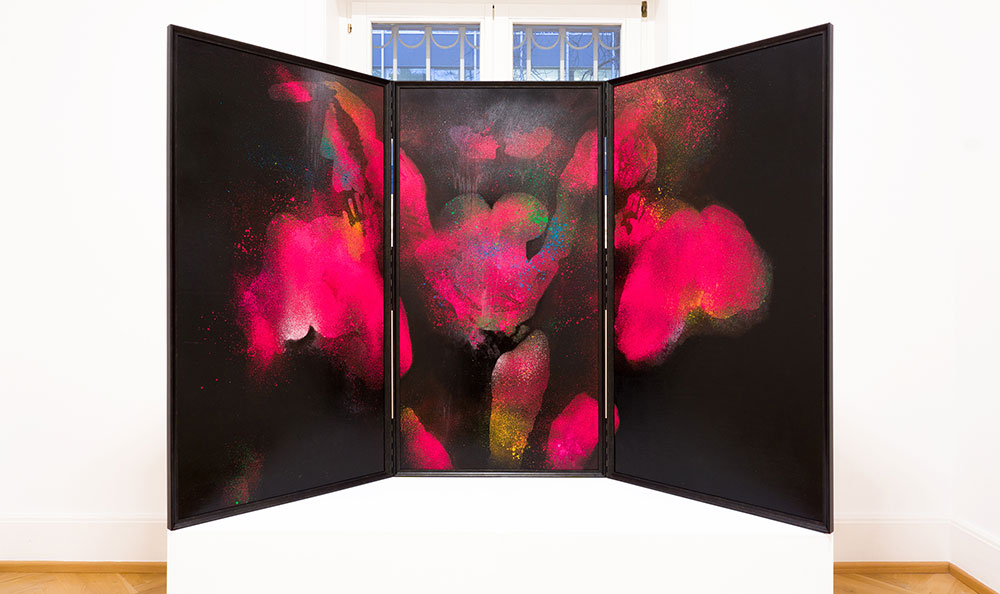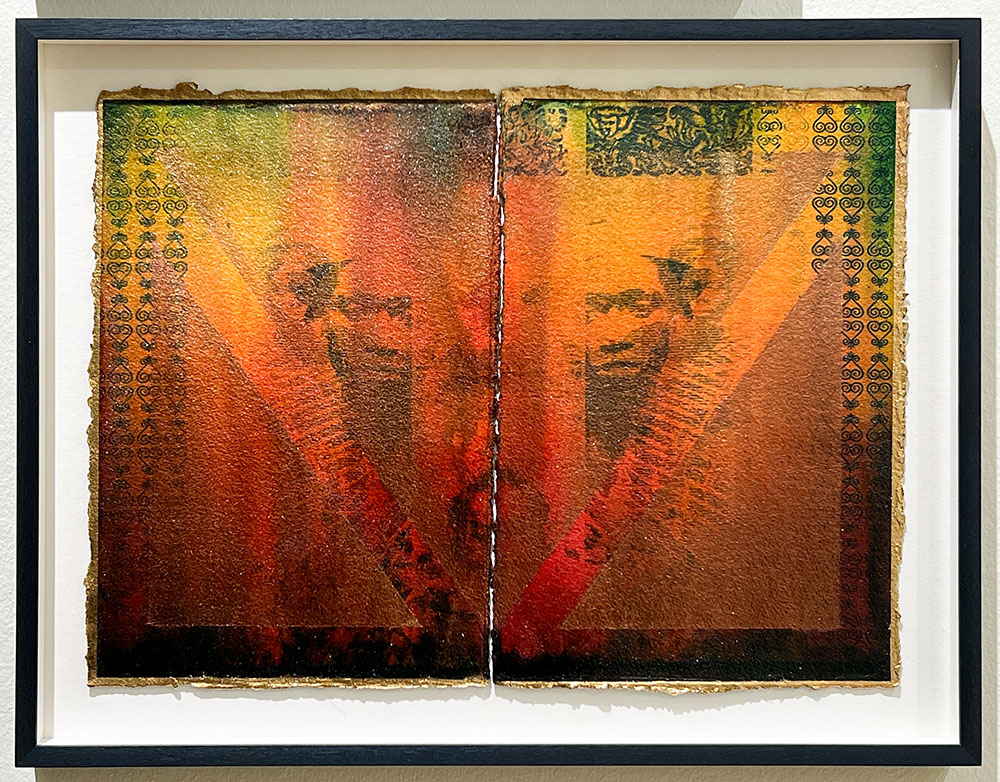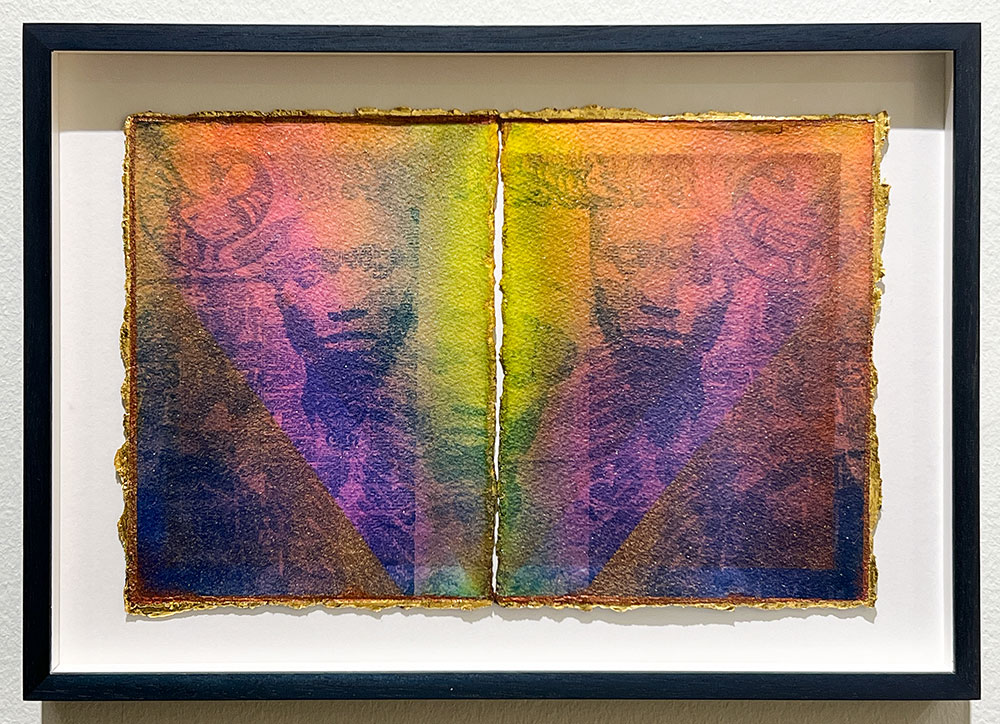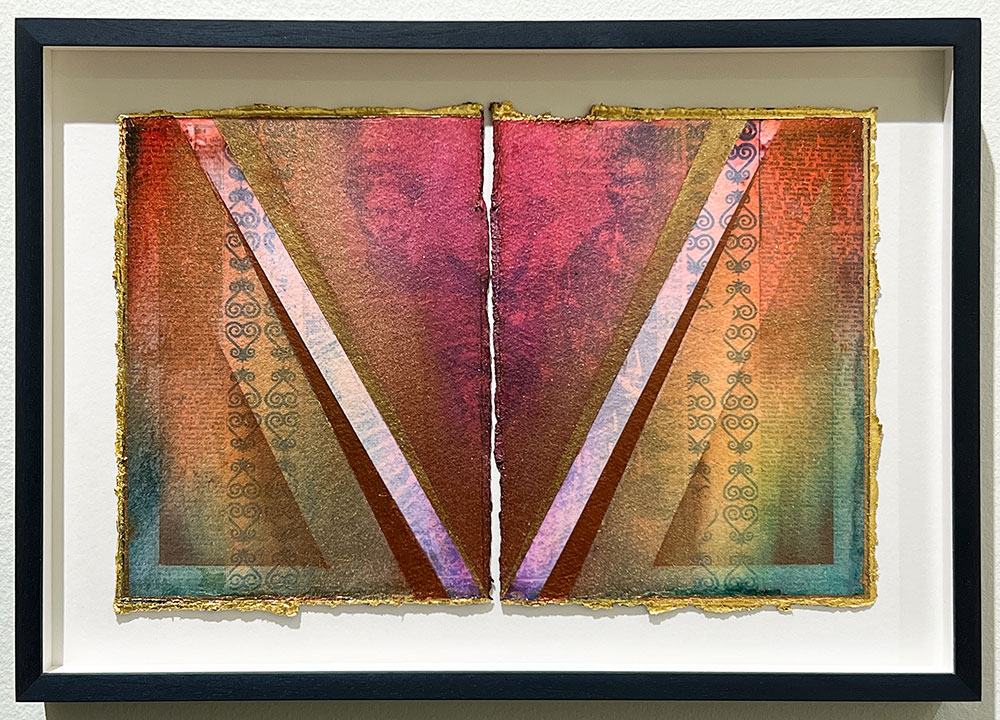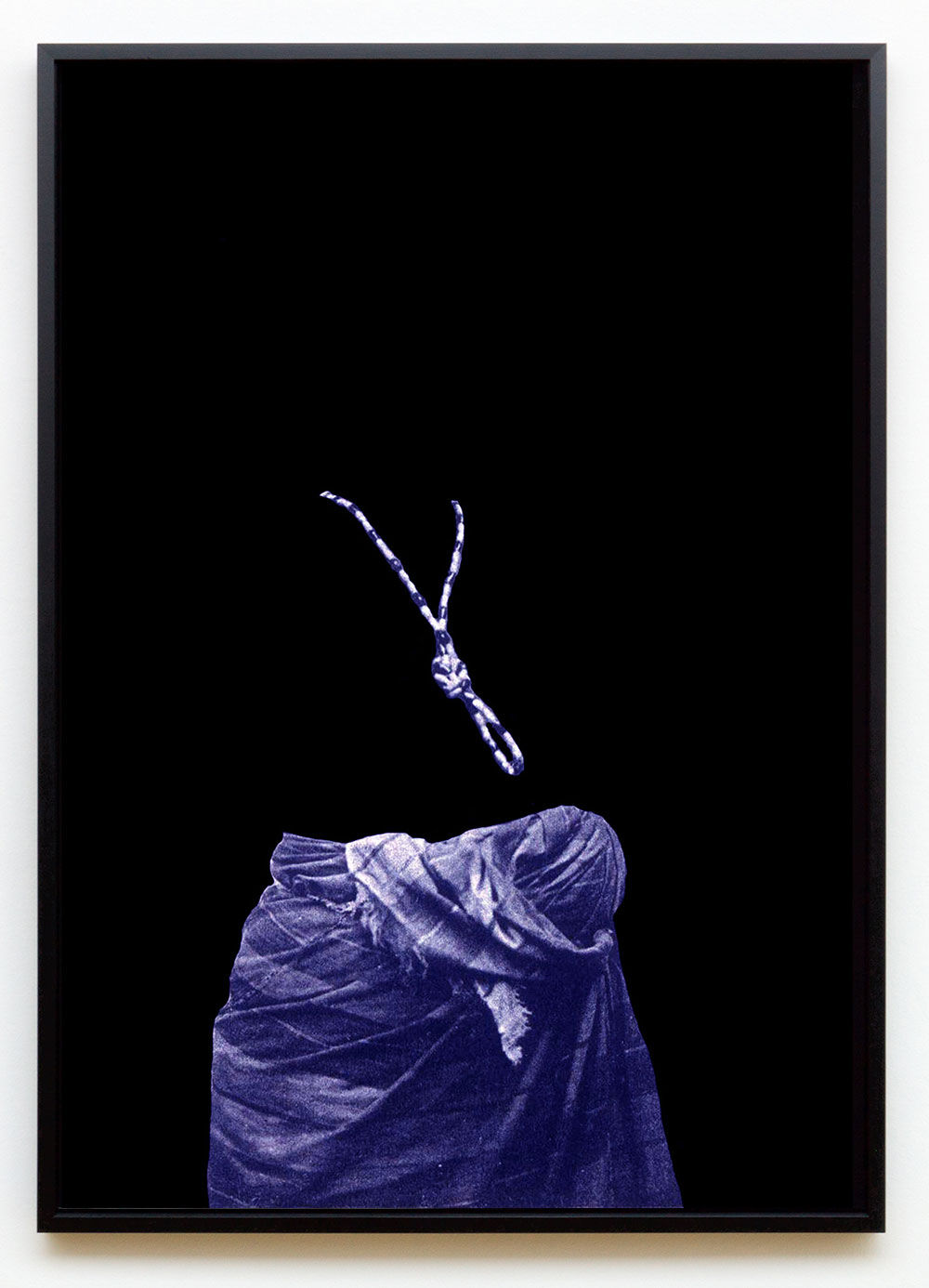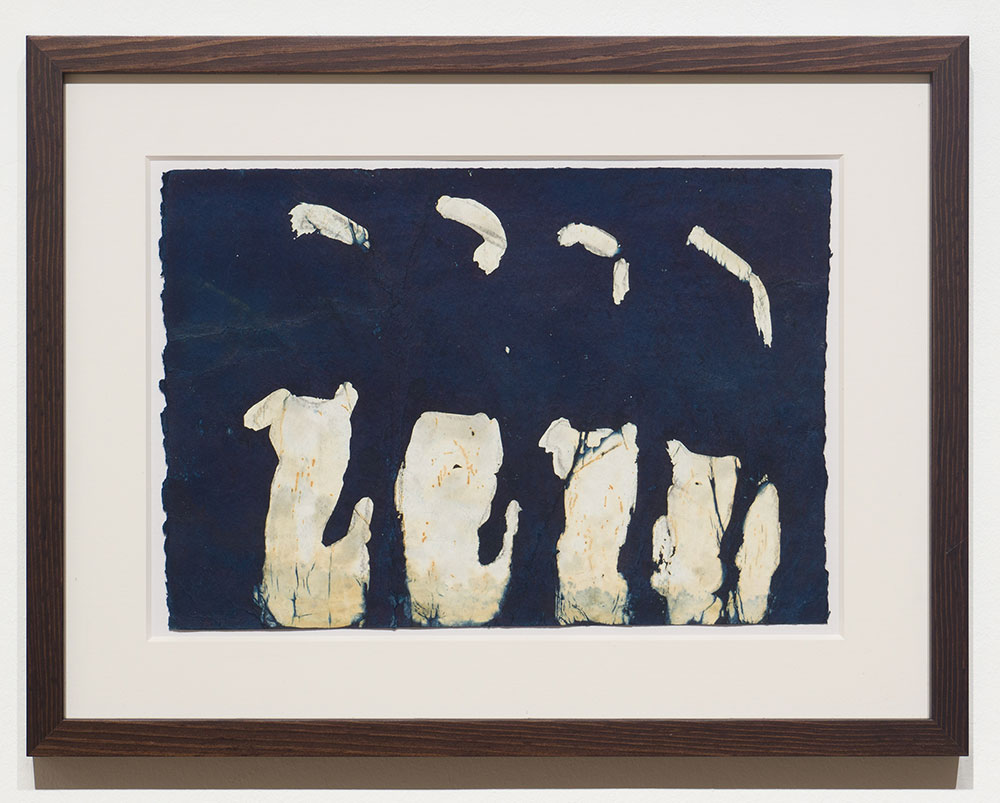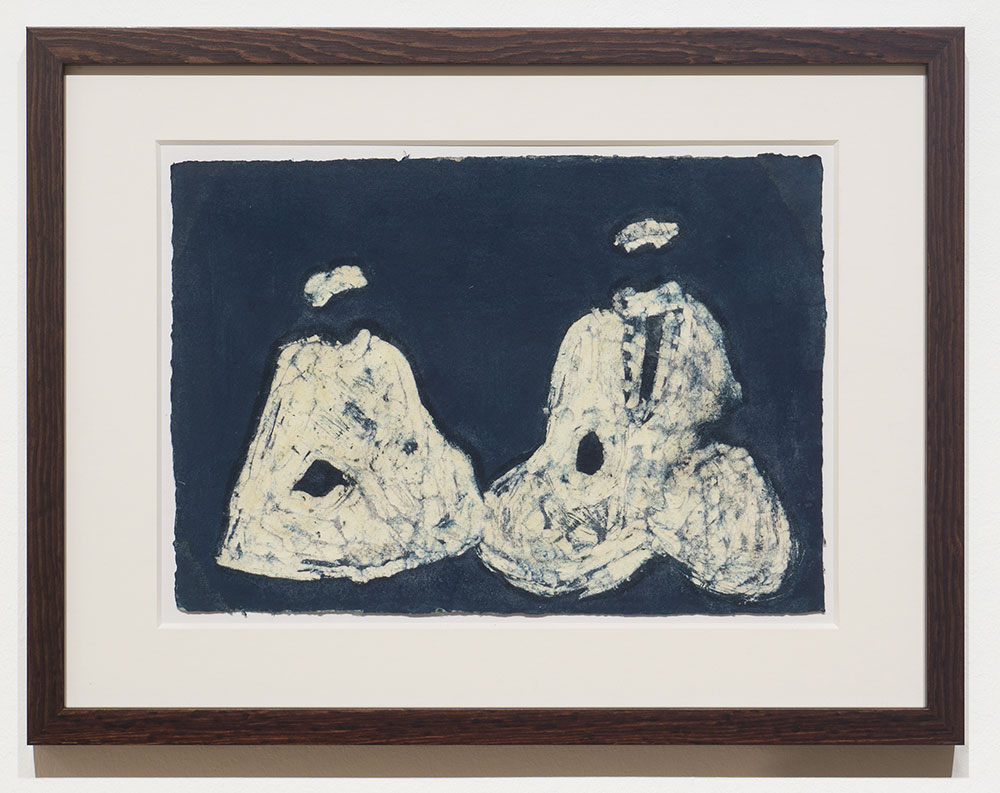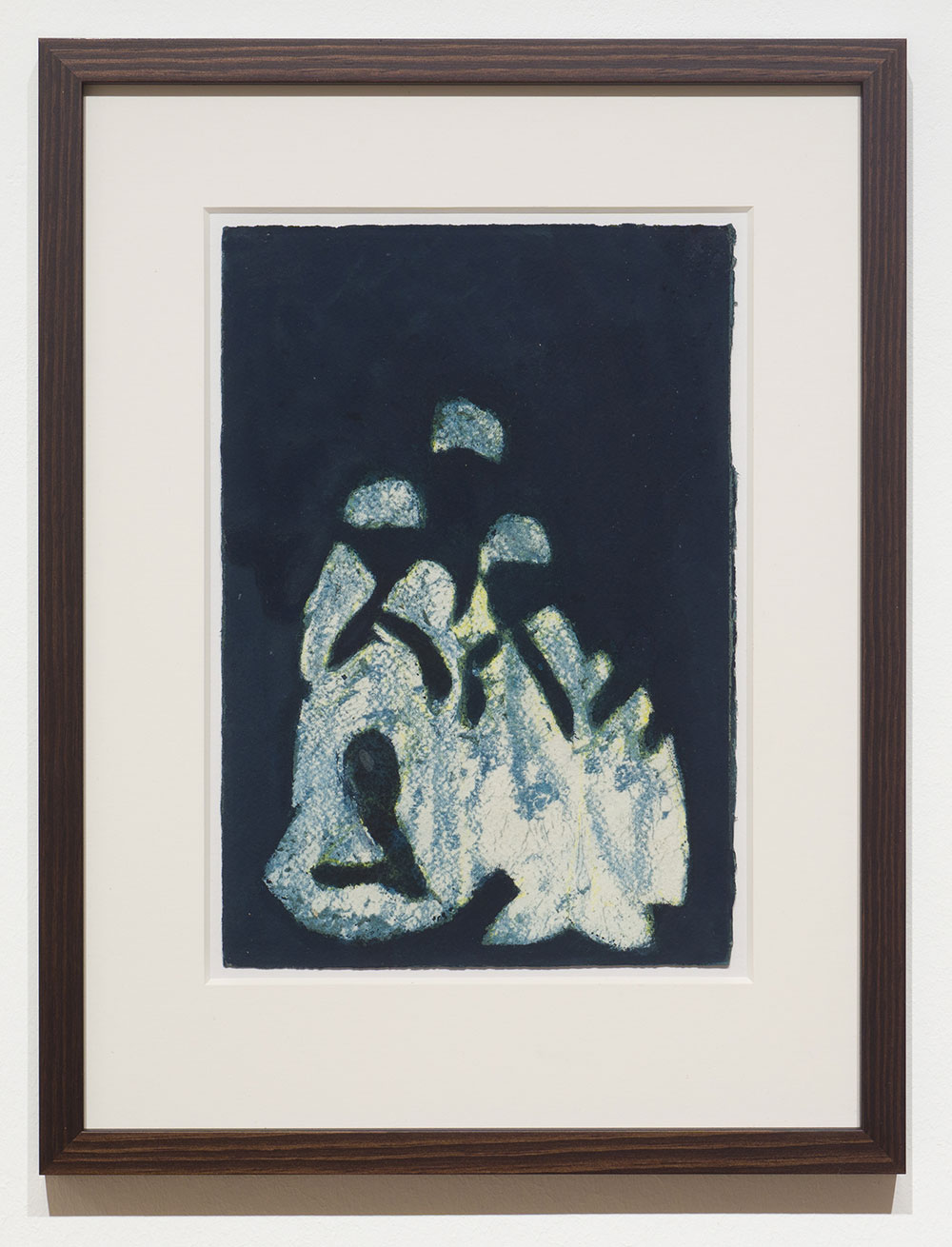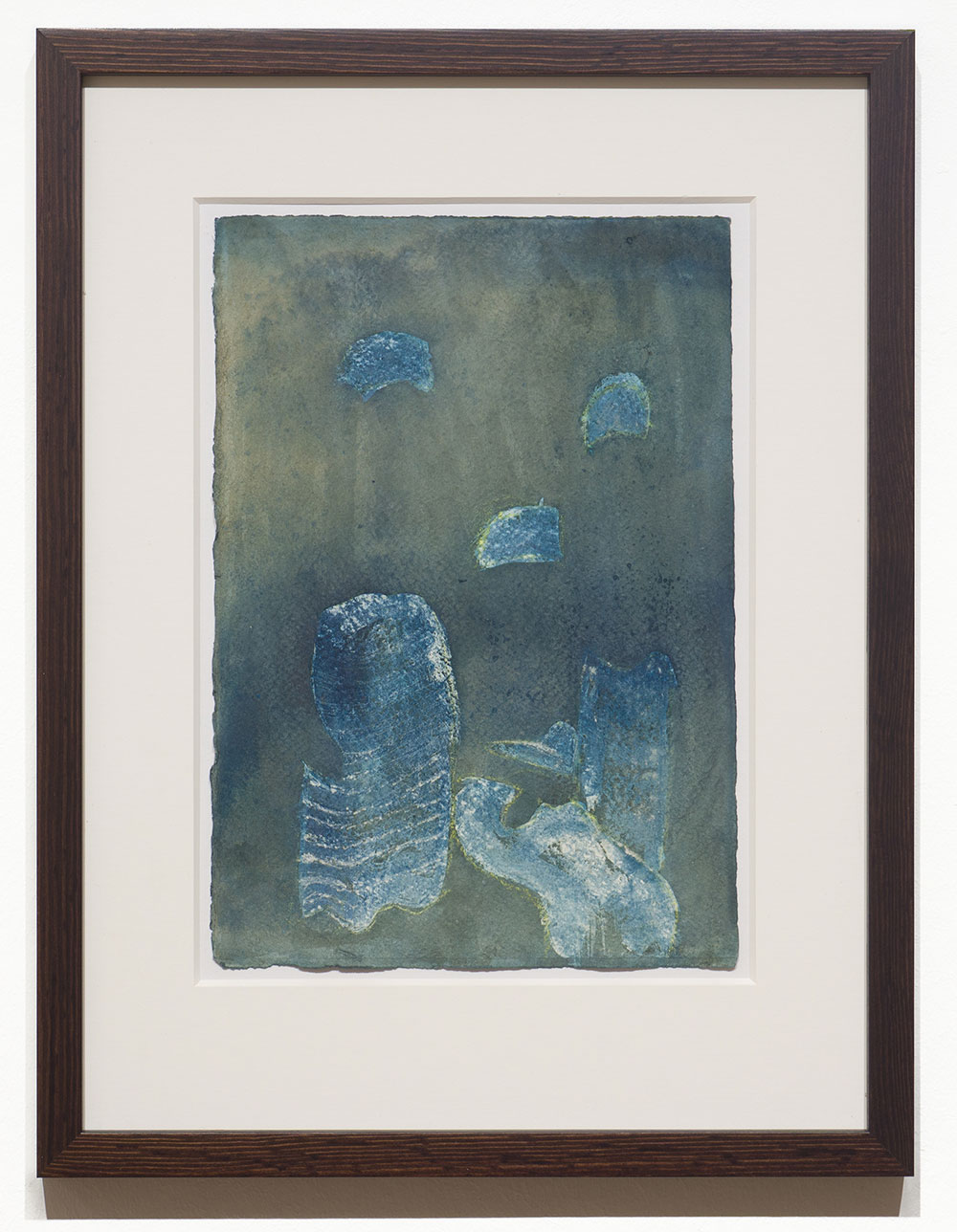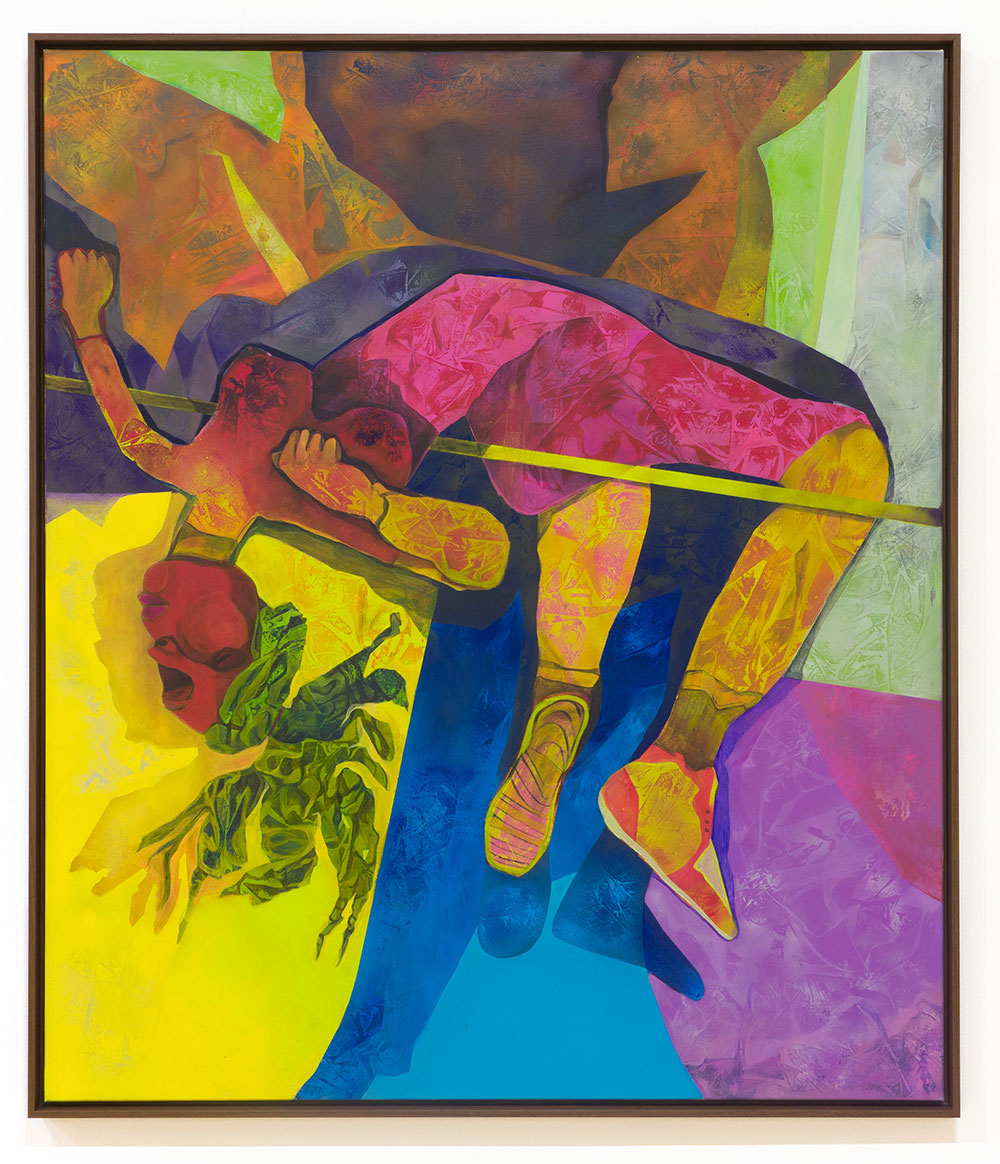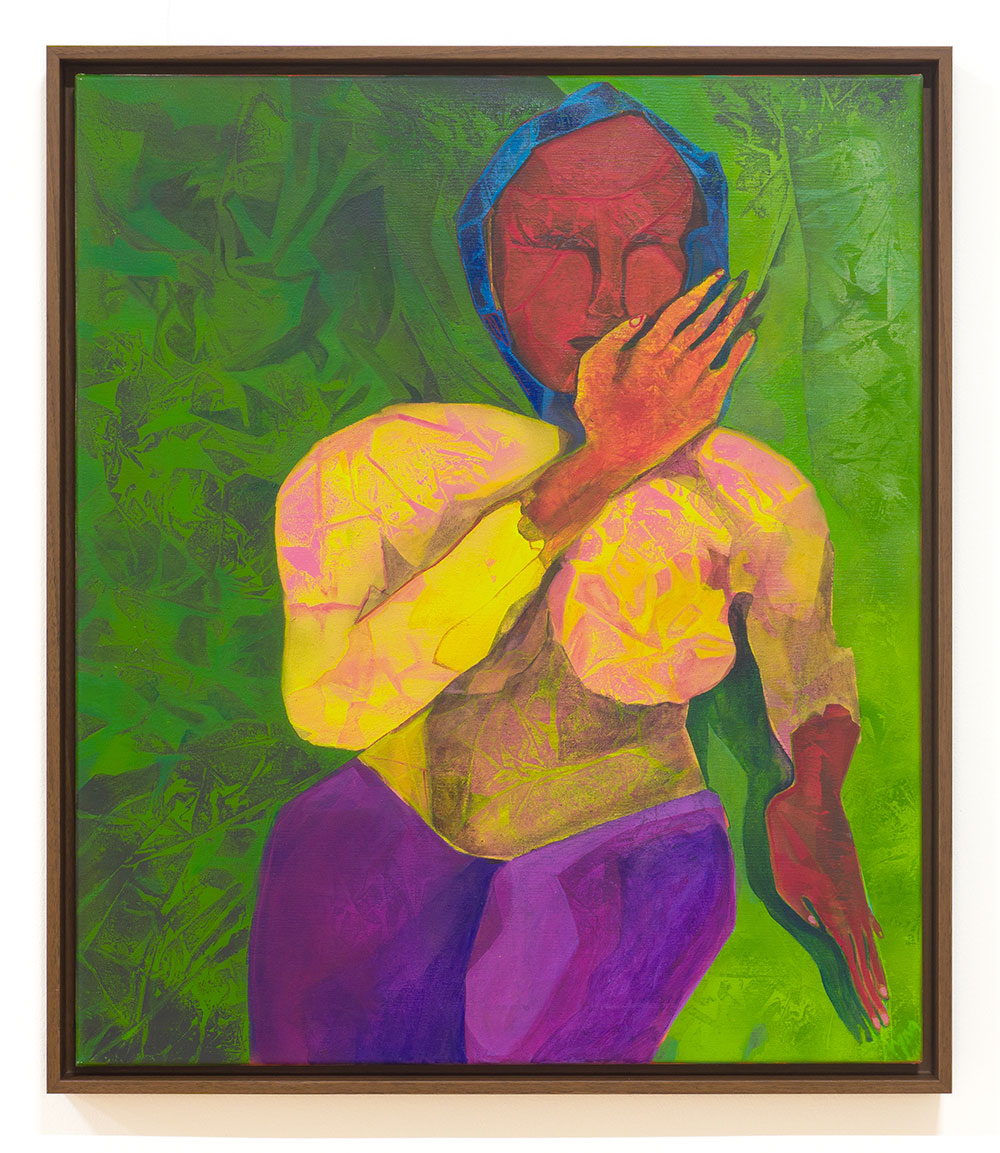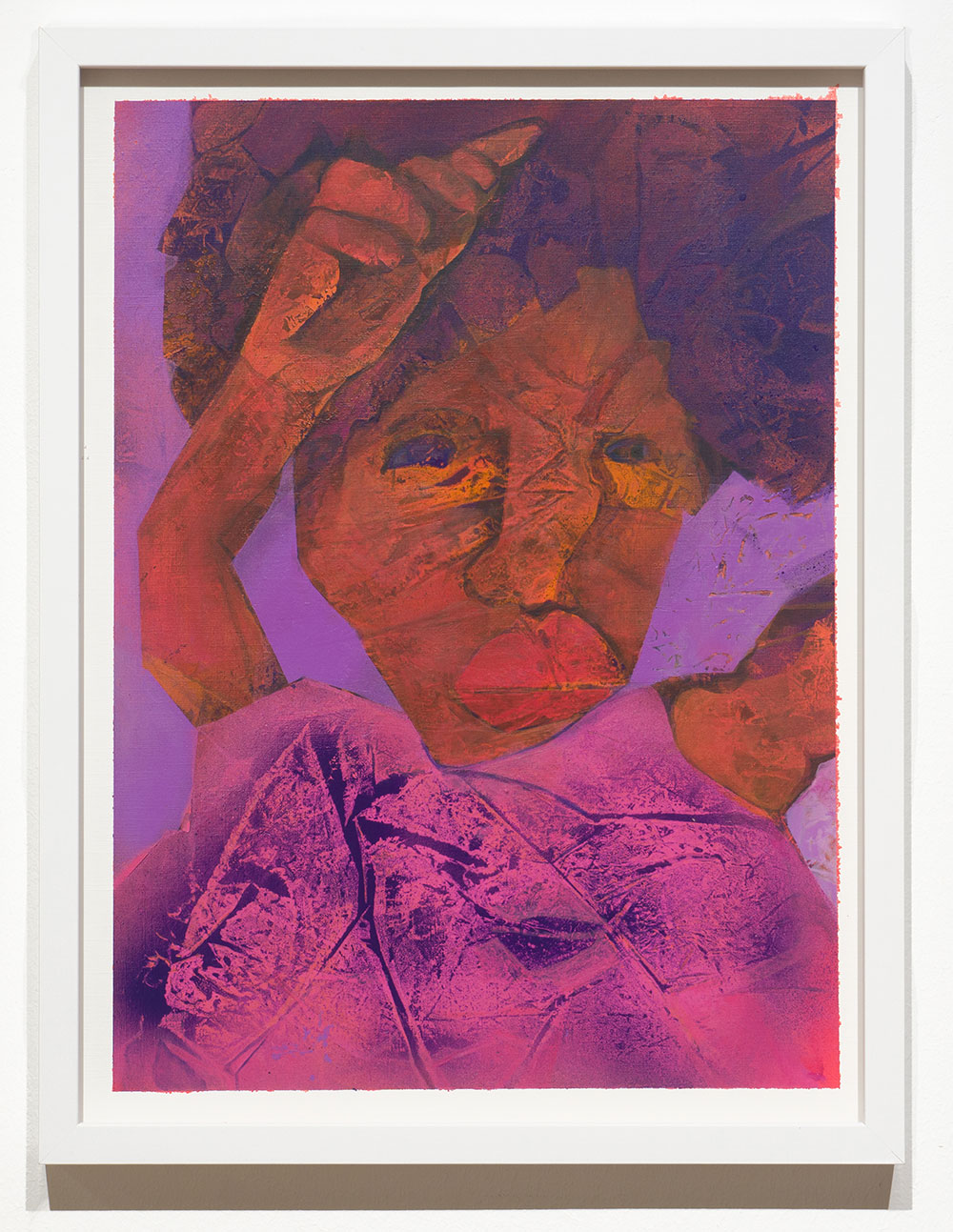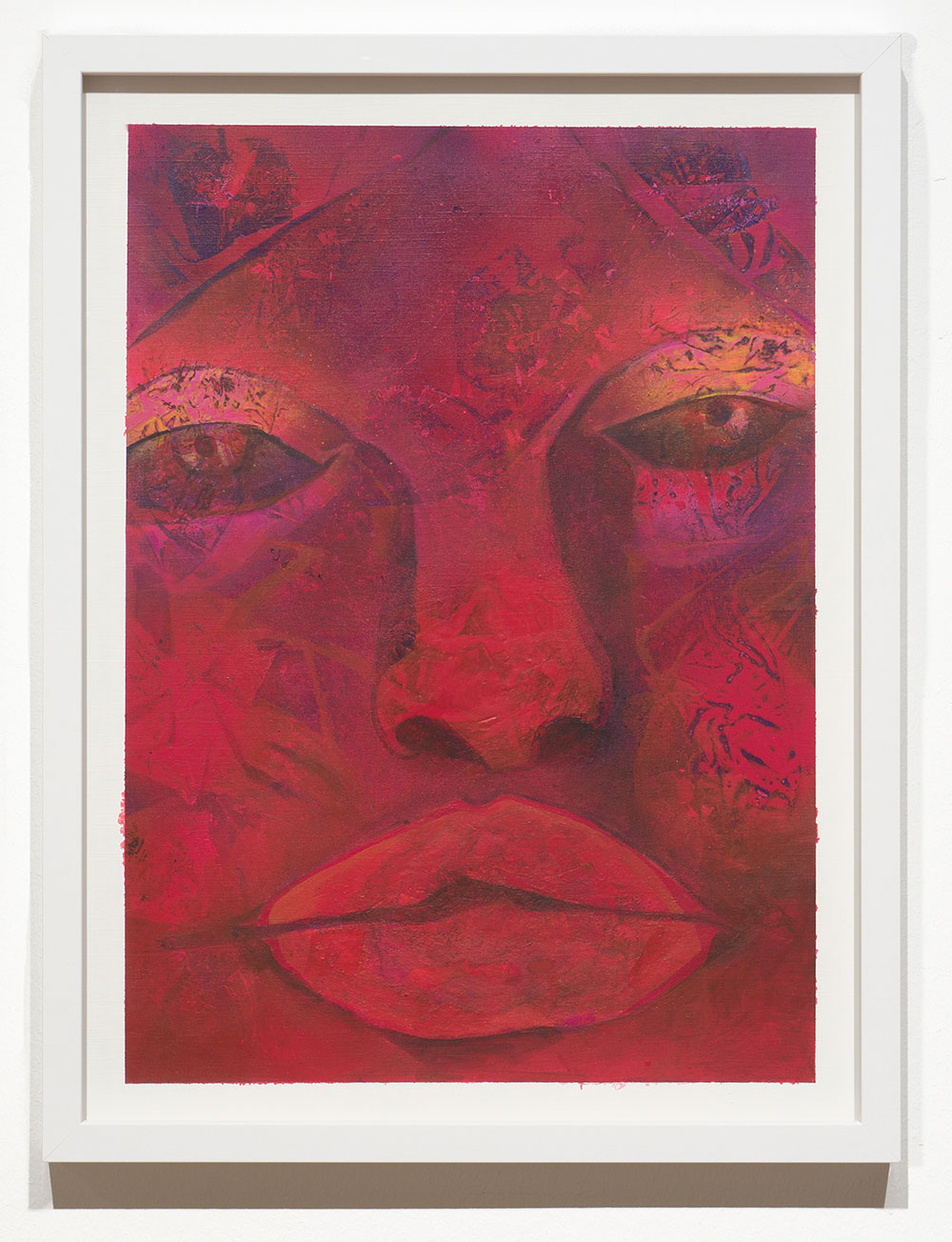Adelaide Damoah
In "Radical Joy," Adelaide Damoah extends her body print work into a playful and thoroughly explorative space, plunging into the realm of both sensory and sensual expression. The exhibition includes works on paper and on canvas as well as a triptych on wooden boards, each work being adorned with illuminated pigments peering out of blackness, soft and muted in parts and sharp and vibrant in others. The works are layered in multiple soaks of dye and raw pigment and the compositions collectively reveal a sweeping release, mirroring Damoah's conscious decision to rest and heal her mind by immersing herself in color.
Until 2020, the focus in Damoah's art making was to direct her curiosity towards investigative practices, allowing herself to delve into culturally significant social and historical issues, such as the continual consequences of the epistemic violence of colonialism and intersectional feminism. As a consequence, much of the artist's art making - both in terms of her performance and studio work - is by its very nature dark and heavy, even if the end result is aesthetically pleasing. This is apparent in the look and feel of the work and in the often intense atmosphere of some of Damoah's performances.
"Radical Joy" introduces another approach in the artist's practice, diverting from her usual reds, blues and golds as she meditates on poetry, writing and music. She indulges in a space of play and sensuality, reveling in florescent pinks, yellows, purples and blues. In Damoah's words, "I made a conscious decision to rest and heal my mind by immersing myself in color. Color, process and poetry became a means of escape into my inner world and I began making very different body print works to my usual in that my entire color palette changed drastically from black, gold, red, blue and white. I became obsessed with hot pink, ultramarine and cobalt blue, fluorescent and deep purple, yellow and orange."
Mbali Dhlamini
In her artistic practice Mbali Dhlamini embarks herself in an ongoing search for points of contact with knowledge systems, pre-colonial identities and spirits. Her search manifests in a spectrum of experiences in painting, photography, video, and installation. A monochrome-black pictorial background that absorbs the gaze is her signature motif, consistently appearing in her work since 2013. Dhlamini's portraits, in contrast to genre's definition, persist without a physical presence. Clothes, like empty shells, hint at the former existence of historical protagonists. Dhlamini works with an aesthetic of withdrawal. Her works attest to an on-going, internal conversation with past and present visual landscapes and archives. Her imagery revolves around the question of self, revealed beneath layers of imposed "Western" religion, Christian garments, and attempts to emancipate the black female body from the colonial gaze.
[Mbali Dhlamini began her series] Look Into ... in 2017 during an artist residency at RAW Material Company in Dakar, Senegal. The titles of the large-scale photographic prints, [such as] "Untitled - Afrique Occidentale, Fille Ouolof" and "Untitled - Dakar, Jeune Fille", reveal geographical, ethnographic and cultural modes of attribution as they were used for photography in the context of anthropology in the 19th and early 20th centuries. Almost like figures of abstracted icon paintings, these women of indigenous West African communities appear in their traditional indigo-colored robes.
During the colonial period in Senegal, French, presumably white, photographers took the portraits that form the source material for Dhlamini's works. The beginnings of French colonization of Senegal date back to the mid-17th century, the time of the founding of the capital Saint-Louis, although official colonial policy through the annexation of Senegalese kingdoms is dated in the 19th century. The women, submerged in the unrecognizability of historical spaces, lead us to see the racist penetration of photographic technologies. White skin was elevated as the standard of imaging technology, and the tonalities of black skins were rendered less precisely. In this way, the void of bodies could be read in terms of media reflexivity as well as colonial history.
There is a third possible reading concerning the viewing experience of the edited photographic prints. The artist has digitally reworked the scanned photographs: People and background intertwine to form a black color surface. The portrayed elude the eyes. Only the fabric covering their bodies mark their presence in the black background. The viewer experiences a loss of control. The omission of the human bodies that once filled these fabrics activates the imagination and transforms the act of looking into a process of projection, accompanied by the impression of being secretly observed oneself. The artist's withdrawal of the faces and bodies creates a new situation for the viewer. Looking at photographic portraits is usually linked to a voyeuristic experience, a hierarchical structure that characterizes photographic representations of the female body in particular, and structures the photographic dispositive as an instrument of 'othering' and collecting in the context of (neo-) colonial narratives. In Dhlamini's works this power relationship is rearranged. The original distribution of roles between the viewed 'object' and the viewing 'subject' is destabilized. Through her reworking of the photographs, Dhlamini revises mechanisms inscribed in the photographs, the colonial gaze and the exhibiting of black female bodies, and shifts attention to the brightly patterned garments that mediated social codes and held cultural meanings in indigenous communities. In Look Into, as often in Dhlamaini's work, a process of unlearning and relearning takes place in order to question supposedly established knowledge and make visual representations readable in a different way than their historical contexts intended.
Text by Nadine Isabelle Henrich
Amna Elhassan
Amna Elhassan's latest series unveils a narrative that delves into her personal journey, painting canvases that echo the transformative impact of the war in Sudan that indelibly marked her life. Beginning with the commencement of conflict in Sudan on April 15th, 2023, this body of work becomes a powerful exploration of resilience, healing, and the relentless pursuit of a brighter horizon.
In the aftermath of war, societal perceptions often cast those emerging from its shadow as frail and melancholic. Yet, Amna shatters these confines, embracing a journey that traverses beyond wounds to seek restoration. This journey unfurls far from her ancestral home in Bahri, where familial solace once prevailed. Her decision to depart this haven marks a poignant departure, birthing an enduring sense of uncertainty, shaping her expedition towards the unknown.
Central to Amna's artistic pilgrimage is an unyielding faith in the potential for a better tomorrow. Through her creations, she dares us to challenge the labels cast upon the displaced and the immigrants, suggesting that their narratives have the power to enrich the tapestry of the societies that embrace them. With unwavering resolve, she asserts her identity as a survivor, separate from the role of a combatant—her story woven into the fabric of conflict, yet distinct from its warring strands.
In the midst of her introspection, Amna finds resonance in the embodiment of strength and recuperation, symbolized by women in sports. Her journey, she shares, unfolded as a series of exigent choices, propelled by the urgency of displacement. In this realm of necessity, adaptation was the only path, and stagnation simply unthinkable.
The chromatic palette of Amna's compositions draws inspiration from her new German surroundings, an evolution from the hues of her Sudanese heritage. A symphony of shades reflects the changing ambiance—light and atmosphere shifting with geography. However, her commitment to vivid colors remains resolute. These hues, she contends, hold a balm for her spirit, a vessel for healing, defying expectations of somber palettes.
Embedded in the fabric of her story is the notion of community—a vital force that courses through her journey. Amna's unity, cultivated through personal tribulations, infuses her work with an enduring vitality. The textures she employs mirror her tumultuous passage—a trajectory spanning from Khartoum to Egypt, Saudi Arabia to Germany. The abrupt upheaval of war shattered her sense of belonging, leaving in its wake a tapestry woven with uncertainty and disorder.
As you navigate Amna Elhassan's artistic narrative, textures and hues coalesce to recount a tale of remarkable tenacity. Her voyage resists being bound by conflict, each piece bearing the rugged texture that mirrors her path—a journey of instability and upheaval. Through her art, Amna beckons us to bear witness to her transition from the ravages of war to the shores of a future filled with hope, though uncertain.
Text by Larissa Diana Fuhrmann
